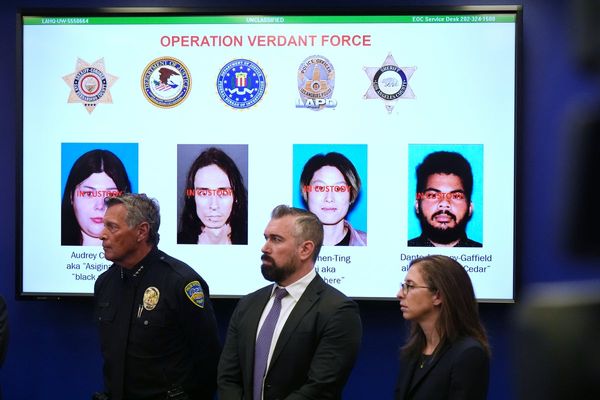
As tensions reach boiling point, Beijing and Taipei look to the past to legitimise their conflicting ambitions
A “breakaway province”, a “government-in-exile”, a “separate nation” – Taiwan’s status has dominated discussions on China for decades.
- SEE MORE Is China preparing to invade Taiwan?
- SEE MORE What the ‘One China’ principle means for future of Taiwan
- SEE MORE Where Britain stands on the China-Taiwan tensions
A self-ruled island of 24 million people separated from the mainland by 100 miles of sea, it is, according to The Wall Street Journal, “a vibrant democracy that produces most of the world’s advanced computer chips”. But Taiwan is “also a critical piece of [Xi Jinping’s] goal of restoring China’s standing as a great power”.
China’s leader has said that taking control of the island is a task that “should not be passed down from generation to generation” and with relations at their lowest point in decades, long-simmering tensions risk boiling over into a full-blown conflict that could have huge geopolitical implications.
Has Taiwan always been separate from China?
References to Taiwan in Chinese court records date back to the third century but the island was not brought under direct Chinese control until the 17th century when it was taken over and administered by the Qing dynasty. It was ceded to Japan in 1895 after the First Sino-Japanese War but returned to China in 1945 following the end of the Second World War.
The modern-day stand-off between the island and mainland dates back to 1949 and the end of China’s brutal civil war. Having been defeated by Mao Zedong’s Communist army, the nationalists, led by General Chiang Kai-shek, and remnants of his Kuomintang administration, along with roughly 1.5 million supporters, fled across the Taiwan Strait to set up a government-in-exile.
“China points to this history to say that Taiwan was originally a Chinese province,” said the BBC, “but the Taiwanese point to the same history to argue that they were never part of the modern Chinese state that was first formed after the revolution in 1911 – or the People’s Republic of China that was established under Mao in 1949.”
This timeline is crucial as both sides seek to establish historical legitimacy to support their claim to represent the true China.
So is Taiwan a country?
“There is disagreement and confusion about what Taiwan is,” said the BBC.
Established as a nominal democracy, Chiang’s Republic of China (ROC) government-in-exile claimed to represent the whole of China, and initially held its seat on the UN Security Council. With Mao’s People’s Republic of China (PRC) an international pariah, the ROC was recognised by many nations as the true Chinese government.
Things began to change in 1971 when the UN passed a resolution switching diplomatic recognition to Beijing. This was followed a year later by US President Richard Nixon’s historic visit to China, a move that began the long process of opening up the country to the rest of world.
In 1979, the US “revoked its diplomatic ties and its mutual defense treaty with Taiwan and established formal diplomatic relations with mainland China”, said Deutsche Welle. “Despite this shift,” however, “Washington has maintained close unofficial ties with Taipei.”
Fewer than 15 countries now formally recognise Taiwan’s government. Beijing’s “one-China principle” formally declares its claim over the island, which it considers to be a “breakaway province”, said Australia’s ABC News, even though “many Taiwanese people consider their self-ruled island to be a separate nation”.
Yet despite its contested status, The Guardian said, Taiwan has “enjoyed de facto independence since the end of the civil war in 1949”. More than 75% of people in Taiwan now consider themselves Taiwanese compared to just 7% who view themselves as Chinese.
Have relations always been so bad?
As mainland China and Taiwan enjoyed an economic boom in the 1980s, relations between the two slowly improved. Taiwan relaxed rules on visits to and investment in China and in 1991 proclaimed that the war with the PRC was over.
Proposals by Beijing to incorporate Taiwan into China under its so-called “one country, two systems” option established in Hong Kong were rejected by the government in Taipei but despite this, Al Jazeera termed the period from 1987 to 2016 as one of “fragile reconciliation”.
“Less than a decade ago, ties seemed to be on the mend as the two sides… deepened economic, cultural and even political engagements,” agreed CNN.
But Taiwan’s transition from one-party state to a dynamic democracy, with a booming tech-led economy, has alarmed Beijing. The election as president of Tsai Ing-wen, from the traditionally pro-independence Democratic Progressive Party (DPP), brought the “end of the honeymoon”, according to Al Jazeera.
At the same time “China’s authoritarian turn under leader Xi Jinping and plummeting relations with Washington have pulled Taiwan closer into the orbit of the US”, said CNN. “This has infuriated Beijing, spurring it to unleash more pressure on Taiwan and sending cross-strait relations on a downward spiral.”
Today, said the news network, “relations are at their lowest point in decades – raising fears of military escalation, even as experts caution that an imminent all-out war remains unlikely”.







